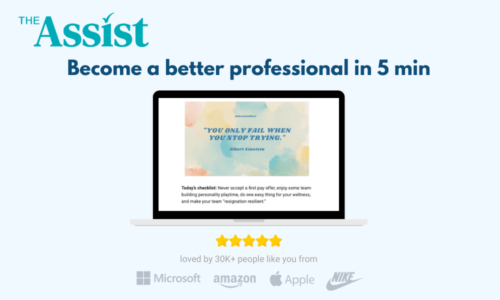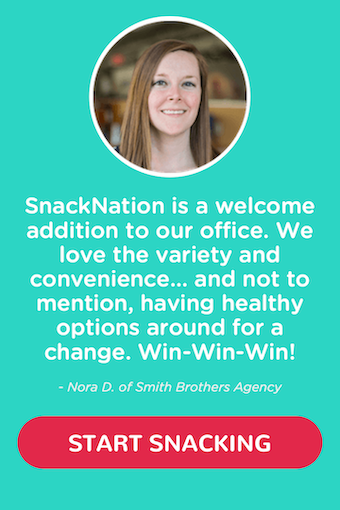
When hiring an HR rockstar, searching for the best HR job posting websites can make all the difference.
Many job posts give you options, so long as you know the strengths, weaknesses, and benefits of each job board. This article, the top HR Job Posting Sites, covers all of that.
⭐ Get the free email newsletter that helps growth-minded HR Professionals:
- Avoid real-world embarrassing, uncomfortable, and common HR mistakes
- Build stronger professional relationships while feeling less isolated
- Find a safe space to vent, learn, and be a part of a like-minded community
Find your qualified candidate in one of these job websites listed in this comprehensive guide, there is a place for any open positions you have in your Human Resources department.
What is a Human Resource Job Posting Website?

A Human Resource Job Posting website, also known as an HR job board, is an online platform that facilitates the hiring process for HR positions. The HR job listings you post on the HR job board are seen by job seekers who are on the board.
Each website has a different set of features for finding job candidates. They also have different features for the type of job and company requirements. As you look, keep in mind that many websites have a support staff to go in-depth with your requirements to make sure your exact job post is put out to the job market you seek.
Find an employee who matches everything from experiences, goals, location, and availability, with this list of the best HR Job posting websites.
13 HR Job Posting Websites
Each HR Job Posting website has its strengths, weaknesses, and niche. Keeping the HR Role in mind, consider which website would provide the best service.
1. Career Builder
“We’re Building for You.”
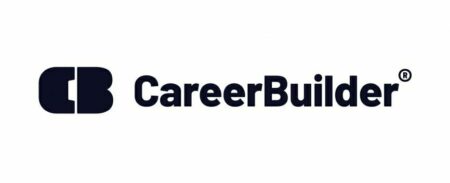 CareerBuilder lists all HR roles on a platform with recruitment tools, from job postings to candidate screening and applicant tracking. Its global presence, coupled with customized solutions, ensures it’s a valuable staffing platform for any company.
CareerBuilder lists all HR roles on a platform with recruitment tools, from job postings to candidate screening and applicant tracking. Its global presence, coupled with customized solutions, ensures it’s a valuable staffing platform for any company.
👍 Pros of using Career Builder to publish your HR Job:
- Diverse Talent Pool: Find a match for all your HR listings.
- Recruitment Tools: Streamline the hiring process with a suite of useful tools.
- Tailored Customer Support: Work with CareerBuilder to craft job postings that specifically target candidates who meet your qualifications and criteria.
👎 Cons to using Career Builder to publish your HR Job:
- Increased Competition: The platform’s popularity may result in higher competition for job postings.
- Varied Candidate Quality: You may encounter candidates who don’t precisely fit your criteria, requiring extra time for screening and assessment.
- Email Challenges: Sending mass emails is possible, but it’s not the most intuitive feature, posing some usability challenges.
🤑 Cost: Plans start at $349/mo per post, $749/mo per 5 posts, $425 pay-as-you-go per job post.
2. Dice
“The Right Tech Role is Out There. Discover It On Dice.”
 Dice is the go-to platform for hiring tech professionals, catering to all career stages. It offers tech-focused employers tailored job matches and provides valuable insights and tools for connecting with top-notch technologists.
Dice is the go-to platform for hiring tech professionals, catering to all career stages. It offers tech-focused employers tailored job matches and provides valuable insights and tools for connecting with top-notch technologists.
👍 Pros of using Dice to publish your HR Job:
- Niche Tech Audience: Dice specializes in the tech industry.
- Invaluable Industry Insights: Gain access to industry expertise and data with market trends and tech-related HR role salary information.
- Efficient Screening: Dice offers advanced filtering and screening tools, streamlining the hiring process.
👎 Cons to using Dice to publish your HR Job:
- Limited Field Focus: Dice is only suited for jobs within the tech industry.
- Smaller Candidate Pool: The candidate pool may be smaller compared to more general job platforms that also attract HR professionals seeking tech roles.
- Contact Information: Some candidate resumes may lack essential contact details, potentially necessitating the use of alternative channels to reach out.
🤑 Cost: Plans start at $399/post, $429/2 posts. Subscription pricing is available starting at $395/mo.
3. SHRM HR Jobs
“Better HR Professionals. Better HR Jobs.”
 SHRM HR Jobs is an online job platform designed for HR professionals, with sections dedicated to the full range of HR jobs. Over 300,000 HR leaders on the platform cultivate healthy work cultures for more than 115 million employees worldwide.
SHRM HR Jobs is an online job platform designed for HR professionals, with sections dedicated to the full range of HR jobs. Over 300,000 HR leaders on the platform cultivate healthy work cultures for more than 115 million employees worldwide.
👍 Pros to using SHRM HR Jobs to publish your HR Job:
- Diverse Candidate Outreach: Leverage their tools to attract a wide range of candidates from external websites and social media.
- Internship-Specific Posting: A specialized internship hiring section separates full-time and part-time job seekers from internship job seekers, speeding up the hiring process.
- Networking and Resources: SHRM HR Jobs provides additional networking and educational resources on industry trends and best practices.
👎 Cons to using SHRM HR Jobs to publish your HR Job:
- Limited Candidate Diversity: Due to its specialized focus, SHRM HR Jobs may attract a less diverse candidate pool compared to more general job boards.
- Premium Job Seekers: The service for job seekers who pay a premium for professional resume editing may make some candidates stand out over other qualified candidates.
- No Free Job Postings: The platform does not offer a free plan for job postings.
🤑 Cost: Membership and non-membership plans are available starting at $399/mo.
🔥 Pro-Tip from The Assist: Leverage niche industry-specific sites if seeking candidates with specialized skills or experience.
4. HRJobs
“We Match the Best HR Professionals With the Best HR Jobs.”
HRJobs is an HR-focused job matching site that links HR job seekers to prime opportunities across industries and provides a comprehensive toolkit for job posting and streamlined hiring. It specializes in connecting skilled HR professionals with companies looking to fill various HR job functions.
👍 Pros of using HR jobs to publish your HR Job:
- Precise Industry Targeting: Quickly reach out to the specific HR roles you are looking for.
- Effective Email Alerts: The base package includes job alerts to the site’s extensive database of HR professionals.
- Simplified Templates: Useful HR Templates are simplified, and these are straightforward and consistent job templates.
👎 Cons to using HRJobs to publish your HR Job:
- Limited Userbase: With approximately 4,000 job seekers and 685 companies, this user base may impact candidate reach.
- Lack of Advanced Features: Features like candidate matching and applicant tracking make reaching out and following up less streamlined.
- Limited Employer Branding: There is minimal space for showcasing company culture and reputation.
🤑 Cost: $249.00/mo per post, and $796/yr per 5 posts.
5. iHireHR
“Where Search Becomes Found: A Career Platform Built for HR Job Seekers.”
iHireHR is a dedicated platform for HR professionals, acting as outsourced HR recruiters. While their team works, you have control of account management and other powerful features. It streamlines HR hiring by connecting you with specialized candidates based on all metrics you specify about skills and experience.
👍 Pros of using iHireHR to publish your HR Job:
- Efficient High-Volume Hiring: Utilize the dedicated “Job Wrap” feature for consistent, high-volume HR job postings.
- Enhanced Outreach Options: Extend your job listings’ reach through various job ads, like email blasts and social media promotion.
- Direct Resume Access: Gain direct access to job seekers’ resumes, and directly reach out.
👎 Cons of using iHireHR to publish your HR Job:
- Stringent Job Posting Filters: The job seeker filter system may necessitate the use of additional features like branding and display advertising to improve visibility.
- Outsourcing: iHireHR manages 85% of the hiring process of your account, taking on the role of recruiter.
- Higher Costs: In comparison to competitors, pricing may be on the higher side.
🤑 Cost: $349/mo per post, $450/mo per 3 posts.
6. Betterteam
“A Highly Cost-Effective Job Posting Platform for Small and Medium Businesses.”
 Betterteam is a job distribution platform that simplifies recruitment by sending job listings to over 100 job sites with a single submission. It provides user-friendly tools for customizing, posting, and managing job listings while offering approval checks to ensure compliance with job board requirements.
Betterteam is a job distribution platform that simplifies recruitment by sending job listings to over 100 job sites with a single submission. It provides user-friendly tools for customizing, posting, and managing job listings while offering approval checks to ensure compliance with job board requirements.
👍 Pros of using Betterteam to publish your HR Job:
- User-Friendly Interface: Betterteam’s easy-to-use platform simplifies the job posting and applicant tracking process.
- Extensive Job Distribution: Job listings are posted across multiple job boards and websites, expanding your candidate pool.
- Yearly Subscription Discounts: If your hiring needs are ongoing, Betterteam offers cost savings through discounted yearly subscription plans.
👎 Cons to using Betterteam to publish your HR Job:
- Potential for Overwhelming Response: The broad job distribution may generate a high volume of applicants who are not well screened, requiring more effort to review.
- Candidate Limit on Single Job Posts: In the basic package, there is a restriction of every month of twenty-five incoming candidate responses to your job post, which is lifted in the premium package.
- No Direct Resume Access: Betterteam lacks a feature that provides direct access to job seekers’ resumes.
🤑 Cost: $39/mo per post, $99/mo per 3 posts, $139/mo per 10 posts.
🔥 Pro-Tip from Human Crapital: Post on professional association job boards to tap into an engaged community of credentialed candidates.
7. HRCrossing
“The Largest Collection of Jobs on Earth.”
HRCrossing is a private job board that aggregates HR job opportunities posted by employers across 4 million websites, including hidden roles on employer sites, niche publications, and corporate career pages.
👍 Pros of using HRCrossing to publish your HR Job:
- Advanced Resume Search: HRCrossing’s resume database provides tailored candidate search features, including by years of experience, education, and location.
- HR Specialization: With a niche HR focus and paid membership, HRCrossing ensures that job applications come from HR specialists who are genuinely interested in the roles.
- Free Job Posting: You have the option to post one job for free, which can be a cost-effective way to reach potential candidates.
👎 Cons to using HRCrossing to publish your HR Job:
- Complicated Interface: The website interface is a steep learning curve to learn its powerful features due to its complicated design.
- View Limit: There is a limit to the number of resume views in all paid plans.
- No Social Media Integration: Job posts are not automatically shared on social media.
🤑 Cost: Free job post, $399/mo per 3 posts, $699/mo per 10 posts, $999/mo per 20 posts.
8. HR Chief
“Putting People First.”
HR Chief is a dedicated community platform that empowers HR by offering educational content, career resources, HR training education, and expert insights. Its mission is to help HR professionals advance their careers, drive positive change, and stay updated on the latest industry trends.
👍 Pros of using HR Chief to publish your HR Job:
- Senior HR Focus: HR Chief caters to senior HR executives and professionals, making this an ideal platform if these are the positions you are looking to hire.
- Experienced Talent Pool: The platform attracts candidates with extensive HR experience.
- Free Job Posting Site: The small and dedicated community grants free job postings, which can be ideal for startups and small businesses.
👎 Cons to using HR Chief to publish your HR Job:
- Limited Search Tools: Due to the platform’s smaller community and niche field, there are not many search tools to refine candidate searches.
- No Portal: There is no user portal, so expect candidate responses in your email inbox.
- External Website Requirement: To post a job, you must have an existing job post on an external website.
🤑 Cost: Free.
9. LinkedIn
“Find Jobs through Your Community.”
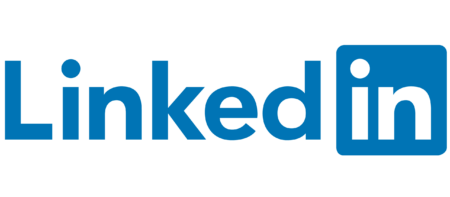 LinkedIn is a prominent professional networking platform that connects individuals and organizations and facilitates career development, networking, and recruitment. It provides a robust platform to post job listings, access a vast network of professionals, and gain insights into candidates’ qualifications.
LinkedIn is a prominent professional networking platform that connects individuals and organizations and facilitates career development, networking, and recruitment. It provides a robust platform to post job listings, access a vast network of professionals, and gain insights into candidates’ qualifications.
👍 Pros of using LinkedIn to publish your HR Job:
- Vast Professional Network: There is an extensive and diverse user base of professionals across various industries.
- Robust Search Filters: The platform offers powerful search and filtering capabilities, allowing HR professionals to precisely identify candidates with specific skills, experience, and qualifications.
- Enhanced Brand Visibility: Prospective candidates often learn of a company’s credibility and culture through LinkedIn job postings, which you can create.
👎 Cons to using LinkedIn to publish your HR Job:
- Incomplete Profiles: Some LinkedIn users may have incomplete or outdated profiles, which can pose challenges for hiring managers in evaluating candidates based on their provided information, potentially resulting in a less streamlined hiring process.
- Limited Audience Targeting: LinkedIn’s audience targeting features are primarily available through advertising options rather than on their job posting boards, potentially limiting the specificity of your job’s reach.
- High Competition: Given LinkedIn’s popularity, standing out among numerous job postings can be challenging, necessitating extra effort to attract candidate attention.
🤑 Cost: Free for a single job post, and multiple job posts follow the pay-per-click model and can be budgeted per month.
🔥 Pro-Tip from The Assist: Review site analytics like number of active users, job views, applications generated, and cost per applicant to choose ones with maximum visibility and applicant volume.
10. Indeed
“Hire the Right Person for Your Business.”
 Indeed, the world’s #1 job site, gives your company access to over 350 million monthly visitors. With a global team of over 13,000 employees, Indeed is dedicated to helping connect employers to the right candidates by implementing a recruitment process through data-driven insights and real-life experiences.
Indeed, the world’s #1 job site, gives your company access to over 350 million monthly visitors. With a global team of over 13,000 employees, Indeed is dedicated to helping connect employers to the right candidates by implementing a recruitment process through data-driven insights and real-life experiences.
👍 Pros of using Indeed to publish your HR Job:
- Budget-Friendly Options: Indeed offers a range of job posting choices, including both free and paid options, accommodating organizations with diverse budget constraints. Their pay-per-click model can be a cost-effective way to attract candidates, and their experienced support team can help you select the right posting option for your business.
- International Exposure: Your job posting reaches job seekers in America and Canada, expanding your candidate pool to a global audience.
- Indeed Apply: Job seekers can easily apply to your job posting through “Indeed Apply,” a streamlined process that typically only requires a resume, simplifying the application process.
👎 Cons to using Indeed to publish your HR Job:
- Intense Competition: The platform experiences high competition as new job postings are added every second.
- Diminishing Visibility: Free job postings may lose visibility over time, gradually moving down in search rankings.
- Template Limitations: The job posting templates are standardized, which may restrict your ability to create highly customized and unique job listings to attract top talent.
🤑 Cost: Free job posts and sponsored job posts are market prices to be negotiated with Indeed.
11. ZipRecruiter
“We Actively Connect People to Their Next Great Opportunity.”
 ZipRecruiter is one of the world’s largest job search engines, simplifying the hiring process by providing customizable job templates and one-click distribution to 100+ top job sites. Their matching technology identifies ideal candidates and invites them to apply, making it a widely used resource in the job search and recruitment process.
ZipRecruiter is one of the world’s largest job search engines, simplifying the hiring process by providing customizable job templates and one-click distribution to 100+ top job sites. Their matching technology identifies ideal candidates and invites them to apply, making it a widely used resource in the job search and recruitment process.
👍 Pros of using ZipRecruiter to publish your HR Job:
- Extensive Exposure: ZipRecruiter disperses job listings across various job boards and websites, significantly expanding the reach of your job postings.
- Direct Candidate Engagement: Utilize the platform’s dashboard to engage directly with potential candidates.
- Applicant Tracking System (ATS): The Applicant Tracking System (ATS) monitors applicants’ progress within the hiring pipeline.
👎 Cons to using ZipRecruiter to publish your HR Job:
- High Volume of Applicants: The broad distribution of job postings on ZipRecruiter may result in a substantial influx of applicants, to a potentially overwhelming degree.
- Manual Sorting for Multiple Listings: If you have multiple job listings, they are funneled into the same inbox, requiring time-consuming manual sorting.
- Incomplete Applications: In some cases, applicants with unfinished applications might pass through the platform.
🤑 Cost: Daily and monthly plans are available. Standard daily at $16/day, Standard monthly at $299/mo per post, Premium monthly at $419/mo per post, and Pro monthly at $719/mo per post.
12. Glassdoor
“Your Work People Are Here.”
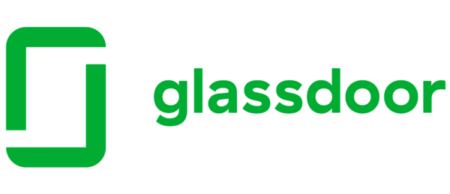 Glassdoor is a dynamic platform dedicated to fostering positive workplace change and connecting companies with talented employees. HR professionals can leverage Glassdoor to enhance their company’s image, post job listings, engage with reviews, and gain insights for recruiting and retaining top talent.
Glassdoor is a dynamic platform dedicated to fostering positive workplace change and connecting companies with talented employees. HR professionals can leverage Glassdoor to enhance their company’s image, post job listings, engage with reviews, and gain insights for recruiting and retaining top talent.
👍 Pros of using Glassdoor to publish your HR Job:
- Indeed Partnership: Recently partnering with Indeed.com, sponsoring a job on Glassdoor will get your job posted on Indeed.
- Effective Employer Branding: The platform empowers employers to establish branded profiles.
- Active Job Seeker Audience: A significant portion of Glassdoor’s user base is actively seeking employment, potentially reducing the time it takes to find a suitable hire.
👎 Cons to using Glassdoor to publish your HR Job:
- Mixed Company Reviews: Glassdoor shares both positive and negative company reviews. Negative feedback has the potential to deter candidates from applying.
- Steep Pricing for Small Companies: Glassdoor’s pricing model can be relatively expensive for smaller companies.
- Emphasis on Branding: If company branding is not a priority for your organization, some of Glassdoor’s main strengths and benefits may not be fully utilized.
🤑 Cost: Plans start at $249/mo per job, $449/mo per 2 jobs, and $999/mo per 5 jobs. A pay-per-click option is also available at rates ranging from $0.10 to $5 per click.
🔥 Pro-Tip from Human Crapital: Opt for sites that offer easy self-service posting, screening tools, and applicant tracking to simplify managing the hiring process.
13. Monster
“We Help Employers and Candidates Find the Right Fit.”
With 25 years of experience, Monster is a global leader in connecting employers and candidates through advanced technology on its website, mobile app, and various products. This is a place both entry-level and seasoned HR professionals use as a valuable resource for finding the ideal job match, contributing to improved workforce productivity and job satisfaction.
👍 Pros of using Monster to publish your HR Job:
- Effective Candidate Matching: Monster excels in attracting and matching relevant candidates to job positions.
- Automated Email Alerts: When you post new job openings, candidates subscribed to email alerts receive automatic notifications.
- Job Refresh Feature: Opting for the 60-day job posting option ensures that job listings are refreshed every 14 days, maintaining the visibility of your job post.
👎 Cons to using Monster to publish your HR Job:
- Limited Skills Assessment: Monster’s skills assessment feature may not be as comprehensive as those offered by other job boards like Indeed.
- Restricted Job Filters: Job seekers have access to fewer filters when searching for your job posting, including the absence of filters for salary and experience levels, for both entry-level and seasoned HR professionals.
- Resume Search Limitations: The resume search function on Monster may be less robust than some competitors, potentially complicating candidate sourcing.
🤑 Cost: Pay as you go for one post, $399/mo per 3 posts, $649/mo per 5 posts.
18 Tips for Posting a Job on an HR Job Posting Website

Enhance your job posting by implementing these HR tips, and significantly improve your prospects of finding your ideal candidate across any HR Job Posting Website.
Clear Job Title 🔎
When you craft a job posting on an HR job board, selecting a clear and concise job title that accurately reflects the role’s responsibilities and nature is key. This ensures potential candidates have a solid grasp of the position.
✅ Examples of Clear Job Titles Include:
- Senior HR Manager.
- HR Assistant.
- HR Analyst.
Engaging Job Summary 📄
An engaging summary entices job seekers to explore further. Craft a concise introduction that highlights the role’s significance, primary responsibilities, and growth opportunities. It not only captivates the audience, but also provides a snapshot of the role’s key responsibilities, company culture, and benefits.
✅ Tips for Writing an Engaging Job Summary:
- Concise and Captivating: Without going into many details in the introduction, give a screenshot of the position and company.
- Key Highlights: Highlight the most important aspects and put them in a bullet point or numerical list.
- Use Engaging Language: One way to use engaging language is to use action verbs. For example, instead of saying “Responsibilities include managing projects,” you can say “Lead and manage projects.”
Detailed Job Description 📝
A detailed job description states the role’s responsibilities and requirements and sets realistic expectations for candidates. Additionally, a detailed description provides a foundation going into the onboarding stage, since new hires will have already learned of their role from day one.
✅ Examples of Vague versus Detailed Job Descriptions:
- A Vague description of an HR Assistant role: Seeking an HR Assistant to support various HR functions. HR Responsibilities include assisting with HR tasks, data entry, and other duties as assigned. Qualifications include some HR knowledge and excellent communication skills.
- A Detailed description of an HR Assistant role: Seeking an HR Assistant to support various HR functions. Responsibilities include assisting with HR tasks including proficiency in HR management software, employee relations, and onboarding.
Key Responsibilities 🔑
Having key responsibilities in an HR job post means outlining the daily core tasks and duties of the position. This should paint a clear picture of how the role will play out in the reality of the company.
✅ Examples of Key Responsibilities:
- Task Clarity: Provide a detailed breakdown of the specific tasks and duties that the role entails, offering transparency to potential candidates about what the job requires.
- Candidate Assessment: They allow job seekers to gauge their suitability for the position, ensuring that individuals who apply have a clear understanding of the role’s demands and expectations.
- Efficient Screening: For HR professionals, key responsibilities serve as a valuable tool for assessing applicants, and helping identify candidates who possess the necessary skills and competencies to excel in the role.
Qualifications and Requirements ⚠️
These are the bare necessities to hold the job and are perhaps the most important section of a job post. These nonnegotiable requirements are, on most job boards, built into the filtering system and effectively bring in qualified candidates. Having qualifications and requirements in a job posting on an HR Job Posting website means specifying the essential skills, experience, education, and other criteria that candidates must meet to be considered for the position.
✅ Examples of How to Prepare Qualifications and Requirements:
- Job Analysis: Begin by conducting a job analysis for the position. This involves defining the role’s purpose, responsibilities, and goals.
- Experience: Specify the minimum years of experience needed, if applicable. Define the type of prior work experience that is relevant to the role, including industry experience or specific job roles.
- Certifications and Licensing: If the position requires industry-specific certifications or licenses, clearly state them as requirements.
🔥 Pro-Tip from The Assist: Produce a short video job description to convey the work environment and put a face to the open position.
Company Culture and Values ⭐
Job candidates care about a company’s culture and values because they want to ensure they align with the organization’s principles and feel comfortable working in that environment, which ultimately leads to greater job satisfaction. Meanwhile, a posted job should include the company’s culture and values to attract candidates who resonate with your culture, leading to better employee retention and performance in the long run.
✅ Examples of Company Culture:
- Customer Focus: A few traits of a customer-focused organization are streamlined customer support, listening to customer feedback, have tailored customer solutions.
- Team Oriented: Use HR cloud software to keep teams connected, allowing collaboration, offering employee development, and valuing collective efforts to achieve goals.
Salary and Benefits 💰
Posting the salary and benefits is crucial for several reasons. First, many job seekers will only apply to jobs that meet their salary requirements, so the transparency of posting it will only save you time. Second, job boards that have features to discover job postings by salary will mean that any posts without this information are excluded from search results. Furthermore, post the benefits package your company offers, as most job seekers consider this a crucial aspect of compensation.
✅ Examples of Salary and Benefits:
- HR Assistant: $50,000 per year.
- Health Insurance: Comprehensive medical, dental, and vision coverage.
- Retirement Plans: 401(k) matching.
Location and Work Arrangement 📍
Job posting sites have features to align your company’s location with the location of potential applicants. By posting location and work arrangements, especially on national job boards, you will narrow the national candidate pool into a regional pool. Work location has an impact on the commute and work-life balance of every employee.
✅ Examples of Location and Work Arrangement:
- Specify Job Location: Clearly mention the physical location of the job, including city and state.
- Outline Work Arrangement: Indicate whether the position is on-site, remote, or a hybrid arrangement.
- Highlight Flexibility: If your company offers flexible work arrangements or the potential for remote jobs, emphasize these aspects.
Application Process 💻
Incorporating the details of an application process in an HR job posting involves offering candidates precise instructions on applying for the position, encompassing resume and cover letter submissions, application deadlines, and any supplementary requirements. This structured approach enhances candidate submissions by enabling them to adhere to established procedures and keeps your schedule and budget on track.
✅ Examples of Posting the Application Process:
- Cover Letter: While some job boards have a system to require cover letters, and others make it optional, you may need to ask for a cover letter in the job posting. One way to ask is to write, “We kindly request that you submit a cover letter along with your resume”.
- Timelines and Expectations: Communicate the expected timeline for application review, interview invitations, and the overall hiring process, by stating, “You can expect to hear back from us no later than [Insert Response Date].”
Keywords and SEO 💡
Incorporating keywords and SEO (Search Engine Optimization) into a post involves using relevant and industry-specific keywords and phrases. This improves the posting’s visibility on job boards and social media and increases its ranking in search results.
✅ Examples of How to Use SEO:
- Job Title Keywords: Make sure your job title includes common industry terms like “HR Manager,” “Talent Acquisition Specialist,” or “HR Generalist.”
- Skills and Qualifications: Incorporate specific skills and qualifications such as “recruitment,” “employee relations,” “SHRM certification,” or “conflict resolution.”
- Action Verbs: Start bullet points with strong action verbs like “manage,” “implement,” “facilitate,” or “develop” to make your job posting engaging.
🔥 Pro-Tip from Human Crapital: Tout employee recognition programs, wellness initiatives, volunteer days, and other cultural elements that make your organization an employer of choice.
Mobile-Friendly Format 📱
Having a mobile-friendly format when posting a job on an HR Job Posting website means that the job listing is designed to be easily accessible and navigable on mobile devices. This ensures that potential candidates can browse, search, and apply for positions conveniently, especially since it is convenient to search for jobs on the train, in a cafe, and on the go.
✅ Examples of Mobile-Friendly Formats:
- Simple Apply Process: Make applying a breeze with an ‘Apply Now’ button or a straightforward link.
- Place Key Info Upfront: Put important details of location, salary, and key requirements at the beginning.
- Use Bulleted Lists: Lists are your best friend. They make information easy to digest, which is crucial on small screens.
Equal Opportunity and Inclusivity 🧑🤝🧑
Posting your company’s stance on equal opportunity in a job post is like waving a flag of fairness and inclusivity. It means you’re making a public commitment to treat all candidates fairly and without discrimination based on factors like race, gender, religion, age, or disability. It attracts talent by signifying inclusiveness, fairness, and company culture.
✅ Examples of Conveying Equal Opportunity and Inclusivity:
- Unbiased Language: Use neutral and inclusive language in the job posting to ensure that all candidates feel welcome to apply.
- Equal Consideration: Emphasize your commitment to equal opportunity, diversity, and inclusion in the workplace.
- Accommodations: Clearly communicate the organization’s willingness to provide reasonable accommodations for candidates with disabilities or specific needs.
Check for Clarity and Accuracy 🧩
Mistakes happen, but overlooking accuracy in job postings invites chaos, with a flood of unqualified applicants wasting time and resources. It tarnishes your company’s image and often leads to mismatched expectations, making precise job descriptions a non-negotiable in the hiring game. Always check for clarity and accuracy before posting to ensure every bit of information is correct.
✅ Examples of How to Check for Clarity and Accuracy:
- Proofread: Read your job post slowly, checking for spelling, grammar, and punctuation errors. Take a break between writing and proofreading to see your work with fresh eyes. And always read it aloud – your ears can catch mistakes your eyes might miss.
- Fact-Check Information: Verify that all the details, including the job title, responsibilities, qualifications, and benefits, are accurate and up-to-date.
- Seek Input: If possible, have colleagues or team members review the job posting for clarity and accuracy, as fresh eyes can often catch issues that may have been overlooked during the drafting process.
Test the Application Process 🧪
Testing the application process when posting a job on an HR Job Posting website involves simulating the candidate experience by going through the application steps as if you were an applicant. It means ensuring the application form functions correctly, all required fields are clear and logical, and any additional assessments or documents are easily uploadable.
✅ Examples of How to Test the Application Process:
- Simulate the Candidate Experience: Go through the application process as if you were an applicant, ensuring that each step, from starting the application to submitting it, works smoothly and intuitively.
- Check for Clarity: Ensure that all instructions, field labels, and error messages are clear and easy to understand.
- Validate Documents and Assessments: Confirm that any requested documents or assessments can be uploaded or completed without technical issues and that applicants receive confirmation of successful submission.
Share Widely 🗣️
Sharing the job listing broadly on platforms like social media, newsletters, and industry forums broadens your recruitment reach, increasing the likelihood of attracting highly qualified applicants. To maximize job visibility, share it widely on various platforms of social media.
✅ Examples of How to Share Widely:
- Leverage Social Media: Share the job posting on the company’s social media profile and with any relevant social media partners and groups.
- Employee Referrals: Promote internal referrals by encouraging current employees to refer qualified candidates from their professional networks, with a recruitment bonus.
🔥 Pro-Tip from The Assist: Promote continuing education stipends, career coaching, and leadership development programs to entice growth-oriented applicants.
Follow Legal Guidelines 🧑⚖️
Navigating legal guidelines when posting a job involves strict adherence to employment laws. It is crucial to stay within the bounds of various employment laws to ensure fairness and avoid legal trouble. It is not necessary to state in the job posting which legal guidelines you are adhering to, but it is necessary to follow them during your hiring process. Aside from national laws, there are likely local laws to adhere to in the hiring process.
✅ Examples of Key Legal Guidelines:
- Title VII of the Civil Rights Act: This prohibits discrimination based on race, color, religion, sex, or national origin.
- Age Discrimination in Employment Act (ADEA): It prevents discrimination against individuals aged 40 or older.
- Equal Pay Act: It ensures equal pay for equal work, regardless of gender.
Engage and Respond 🤝
Engaging and responding in the hiring process is about actively participating in candidate interactions, which helps maintain their interest and prevents them from drifting toward other job opportunities. This means acknowledging applications promptly, keeping candidates informed, and responding to their inquiries, all demonstrating respect and contributing to an exceptional candidate experience.
✅ Examples of How to Engage and Respond:
- Make Time: Once the job application goes live, use an HR tool with a daily calendar, to check and reply to applicants.
- Set Expectations: In your job posting, tell them how and when you’ll communicate.
- Regular Updates: Provide candidates with regular updates on the status of their applications, whether it’s informing them of progression to the next stage or notifying them if they are not selected.
Regular Updates 📆
Keep job applicants in the loop by acknowledging their applications, updating them on their status, and promptly delivering the final verdict. This is a win-win for both you and the candidates as it demonstrates respect for their time and efforts, maintains their interest in your organization, and contributes to a smoother and more professional recruitment process overall.
✅ Examples of Providing Regular Updates:
- Acknowledge Receipt: Set up an immediate confirmation email to applicants when their applications are received.
- Application Status Updates: Proactively inform candidates about the progress of their applications, inviting them for an interview, or politely telling them you are moving forward with another candidate.
6 Common Mistakes to Avoid When Posting an HR Job

You know what to do, now know what not to do. By avoiding these mistakes, your posting will garnish the most applications.
1. Vague Job Titles
Having a vague job title when posting an HR job is a mistake to avoid because it hinders candidates from quickly understanding the nature of the position, potentially leading to a mismatch between their skills and the job’s actual requirements. Clarity in the job title is crucial for attracting candidates who are genuinely interested in the role
❌ How to avoid the mistake of vague job titles: Be Specific and Descriptive: Use a job title that clearly conveys the role’s primary responsibilities and level. For example, “Senior Human Resources Manager” is more specific than “HR Manager.”
2. Neglecting Clarity
Neglecting clarity can lead to misunderstandings and misaligned expectations between the employer and potential candidates. Clear and precise job descriptions and requirements ensure that candidates fully grasp the role’s demands within your company.
❌ How to avoid the mistake of neglecting clarity: Provide Detailed Job Descriptions: In straightforward language, clearly outline the job’s responsibilities, qualifications, and expectations, leaving no room for ambiguity.
3. Lack of Equal Opportunity Language
Lacking equal opportunity language is a mistake because it can inadvertently discourage candidates of diverse backgrounds from applying. Including such language reaffirms the organization’s commitment to fair and equitable hiring practices, indicating to candidates an inclusive workplace culture.
❌ How to avoid the mistake of lacking equal opportunity language: Include Equal Opportunity Statements: Incorporate statements in the job posting that highlight the organization’s commitment to equal opportunity, diversity, and inclusion.
4. Neglecting Salary Information
Neglecting salary information leaves potential candidates in the dark about the financial aspects of the role, deterring applicants who need that information provided upfront. Providing a transparent salary range saves time and resources by ensuring that applicants are a match with your compensation package.
❌ How to avoid the mistake of neglecting salary information: Specify a Salary Range: Indicate the salary range or compensation structure for the position, which may be determined based on experience, set, or negotiable.
5. Excessive Requirements
Excessive requirements in an HR job posting are extras on top of necessary skills. This can significantly narrow your candidate pool to an extreme degree. Potentially qualified candidates can defer because of missing requirements.
❌ How to avoid the mistake of posting excessive requirements: Focus on Essential Qualifications: For each requirement you select, think if it is missing if the job could be done. Prioritize the most critical qualifications and experience necessary for the job.
6. Neglecting Candidate Experience
Neglecting candidate experience can cause you to miss out on valuable candidate backgrounds that you had not before considered. Allow candidates to share their experiences and take a holistic approach to hiring. Differing experiences between two equally qualified candidates can be the difference maker in the hiring process.
❌ How to avoid the mistake of neglecting candidate experience: Streamline the Application Process: Ensure that the application process is straightforward, user-friendly, and responsive, minimizing any unnecessary steps or complexities that could deter candidates and impact their overall experience.
⭐ Get the free email newsletter that helps growth-minded HR Professionals:
- Avoid real-world embarrassing, uncomfortable, and common HR mistakes
- Build stronger professional relationships while feeling less isolated
- Find a safe space to vent, learn, and be a part of a like-minded community
HR Reddit Community
HR professional told me 80% of jobs are posted with someone in mind. What are your thoughts?
byu/CurlyL0cks injobs
Join the Reddit HR Community and gain useful insight into the hiring process from experienced HR professionals offering advice on a range of topics. If you have questions during your job search about the application process, there may be some useful insight in the Reddit Community.
People Also Ask These Questions About HR Job Posting Websites
Q: How do these HR Job Posting websites benefit employers and job seekers?
- A: Job boards act as a digital marketplace, providing employers with a platform to showcase job opportunities to a wide audience. Simultaneously, job seekers benefit from easy access to a variety of positions, simplifying the job search process and allowing them to efficiently target roles that align with their skills and aspirations.
Q: Can you explain how these websites’ job search and application processes work?
- A: Job posting websites work by facilitating the job search process with user interfaces for candidates to browse and filter through various job listings. Once a suitable position is found, applicants typically submit their resumes and cover letters directly through the platform, which employers receive and respond to.
Q: What features and tools do these websites offer employers to manage job listings?
- A: Job boards offer features and tools like easy job posting, applicant tracking systems to keep tabs on candidates, and analytics tools for a backstage pass to your recruitment performance. It’s basically a toolkit to speed up the hiring process and hire qualified candidates.
Q: Do these websites cater to specific industries or job types, or are they more general?
- A: Job posting websites vary, some cater to specific industries, while others are more general. Whether you’re looking for a targeted search or a more general exploration, there’s a job board to match your preferences. Check out this article for more HR Software companies!
Q: What are the costs associated with using HR job posting websites for employers and job seekers?
- A: The costs associated with using HR job posting websites vary. Some offer free single job posts, others offer a pay-per-click model, but most have a monthly cost between $225-$375.







